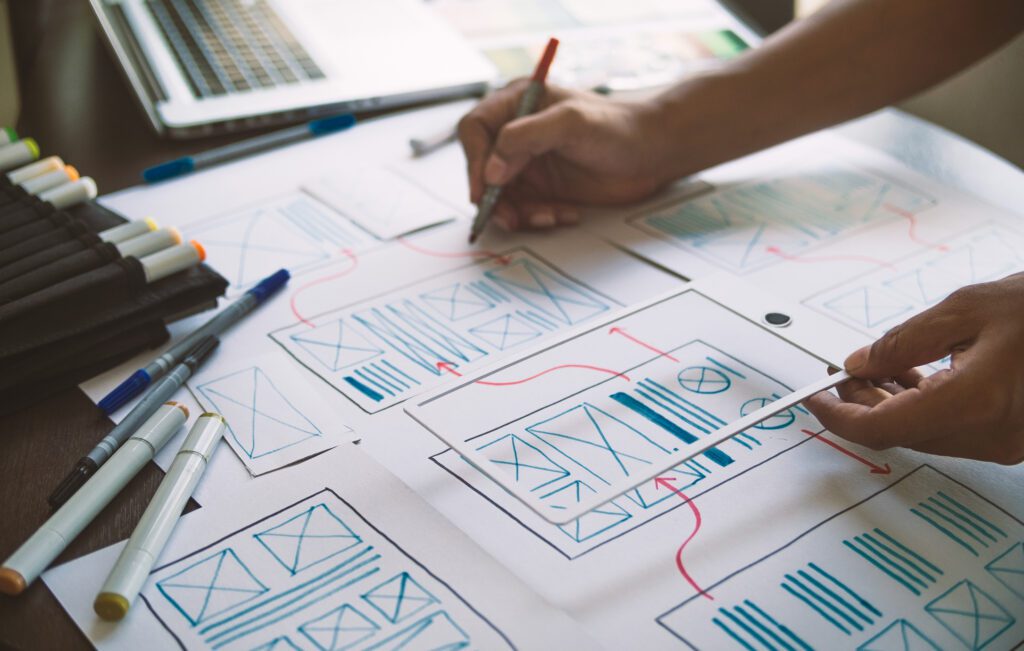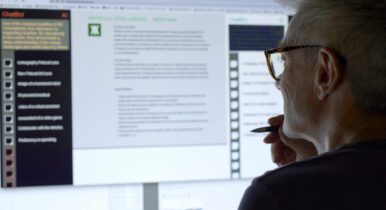Mission Accessible: How One Designer Wants to Bring Change to the Industry
Accessible design is often an afterthought for those building websites in the political campaign space. Raquel Breternitz, who was Elizabeth Warren’s design director in ’20, is working to change that.

Raquel Breternitz wants to close the big gaps that exist between campaigns and groups in the civic space and the 26 percent of Americans who have some type of disability and need extra consideration when being engaged.
In fact, she believes that campaigns need to think about accessibility “super holistically,” meaning that their strategy should stretch beyond the design of their websites, digital ads and printed materials to include events that are wheelchair accessible and include an ADA section. It’s been a mission that took her from visual UX designer for IBM in her hometown of Austin, Texas, to design director on Elizabeth Warren’s 2020 campaign.
C&E: How do you define accessible design in the political space?
Breternitz: I approach accessible design as, very simply, better design for everyone. Just by thinking about accessibility from the beginning you, by nature, make better design work. In the kind of visual and political space that often comes down to much more readable color contrasts so that people can read your yard sign from farther away, or they can get a sense of what your policies are quickly in your brochures because you have a good font and enough contrast. It’s really quite simple things, but always helpful to keep an eye on.
As Democrats, we go out and talk a lot about building a big tent, bringing people in and really caring about different people’s experiences and how they define their lives. If you follow that thread to its natural conclusion, it only makes sense that your design work in the political space should be accessible.
C&E: Does accessible design require more of an investment?
Breternitz: The idea that accessible design is somehow more costly is actually a myth. What is more costly is fixing your design later because you didn’t make it accessible in the first place. It actually costs the exact same amount to just make it accessible in the first place — if you are aware, of course, and are looking for designers that understand this. The more designers who know this and consider it a part of the best-practice work of being a really good graphic designer, just the same as typographic rules, just the same as composition, the better work overall.
C&E: Tell us about how a lack of accessibility could be politically costly.
Breternitz: On the Warren campaign, very early on in the primary season, there was a report that came out that was basically calling all of the primary candidates to task. It said that not a single one of the primary Democratic candidates launched with an accessible website. To me, that’s really heartbreaking, but that’s just a product of not knowing. That report is a large part of why I joined the Warren campaign — I realized, this is somewhere that I could contribute expertise.
Luckily, Elizabeth Warren really took that [report] to heart. She already had disability outreach folks on her campaign. Our campaign was able to prioritize bringing in help: We partnered with Perkins Access to help us audit and rebuild the inaccessible parts of our website, which got it to a much better spot, [including] having an accessibility statement. Not everyone has those kinds of resources, but it would have been so much better if we had known that from the beginning.
But also think about who is coming to volunteer. A lot of times it’s older folks, it’s retired folks, because they have the time during a typical work day to come and volunteer, so if you’re not even thinking about them from the beginning, you’re really kind of shooting yourself in the foot as a political designer.
C&E: What do you look for when hiring a designer?
Breternitz: It depends on the team. A lot of what I look at is, what skills are we missing? In the general sense, something that I really look for is a willingness to wear many hats in a design space. A lot of campaigns can make the mistake of hiring an email graphic designer, and a state lit designer, and a social media designer and keeping designers stuck to their lanes. There is some value in having people that have deep expertise in those spaces, but for the majority of a design team I want people who can float about, and be able to really bring the same quality of work and cohesion of the brand system to each one of those. And of course I care a lot about team cohesion as people as well. You want to know that your teammates have your back.
C&E: What do you want to see in political design moving forward?
Breternitz: I would love to see a lot more designers versed in accessibility at the start. Then we can start to innovate. There have been a ton of innovations in the technology space that have come from disabled people solving problems for themselves, like the typewriter and even SMS texting and voice-to-text, all of those things have their origins as accessibility access devices. I think that’s a great metaphor for us in the design space.



